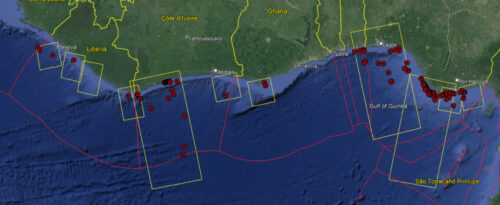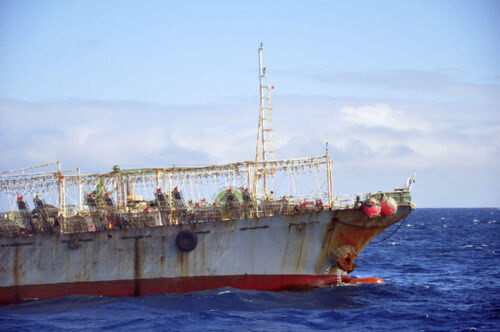Most of the oceans are over the horizon and under the waves. As a result, the ocean is incredibly difficult to monitor. With regards to fishing, most of our data on where and when fishing occurs comes from data collected at port or through the logs of ship captains and onboard observers. These methods are imperfect and result in large gaps in information. According to a recent scientific paper, the actual global catch may be 50 percent higher than the official estimates by the FAO.
What we do know about the oceans is sobering. Roughly ninety percent of the large apex marine animals — top-of-the-food-chain creatures like sharks and tuna — have disappeared since 1950. Eighty five percent of global fisheries are overfished, at capacity, or recovering from being overfished. And roughly one in five of the fish caught globally are done so illegally or without being reported or regulated.
If we are to better manage our oceans, we need a better system to track how we are fishing — ideally one that requires minimal effort by ship captains and which can be applied equally to ships around the world. Fortunately, for larger vessels, new technology can help.
The International Maritime Organization requires all ships bigger than 300 gross tons to carry Automatic Identification System (AIS), which broadcasts a vessel’s location and helps nearby ships avoid collisions. Most countries of the world have adopted these regulations, and many have adopted stricter rules. For instance, Europe requires all fishing vessels over 15 meters in length to carry the device, and Mauritius requires all vessels to do so.
These AIS signals, which are broadcast every few seconds to every few minutes, can be recorded by satellites, and as a result, we can gain a global picture of how fishing vessels are moving. By analyzing these vessels’ movements, we can then identify roughly where and when vessels appear to be fishing.
This data, which drives Global Fishing Watch, won’t answer all of our questions about fishing. We can’t actually count the fish, or see every vessel in the world. But we can shine a light on what is normally obscure — roughly when and where many industrial fishing vessels are placing their nets and hooks in the water. We hope this information will empower fishing fleets, governments, and people like you to better manage how we use our oceans.


